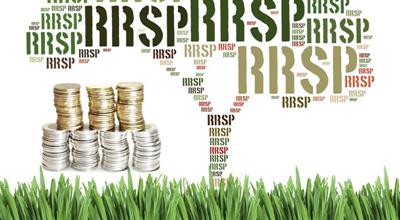 With the RRSP deadline fast approaching (the deadline for the 2014 tax year is March 2nd, 2015), I wanted to take this opportunity to provide some insight on the rules of the road for RRSPs.
With the RRSP deadline fast approaching (the deadline for the 2014 tax year is March 2nd, 2015), I wanted to take this opportunity to provide some insight on the rules of the road for RRSPs. Registered Retirement Savings Plans (RRSPs) were created by the federal government to provide Canadians an incentive to save for retirement. By making a contribution to your RRSP account, you generate an income tax deduction equal to the amount of your contribution. You receive the immediate benefit of reduced taxes in the current year. If, for example, your marginal tax rate is 42%, a contribution of $20,000 saves you $8,400 in taxes for the year.
Contributions can be invested in a vast array of investment vehicles including mutual funds, ETFs, individual stocks, GICs, and segregated funds, to name a few. Once a contribution has been made, those dollars are allowed to grow tax-deferred. Tax is only payable upon redemption. Ideally, this happens in retirement when, for the majority of the population, our marginal tax rates are lower. If a redemption is necessary, there is mandated withholding tax. The amount of tax withheld is dependent of the amount of the redemption. From $0 to $5,000, 10% is withheld; $5,001 to $15,000, 20% is withheld; and for more than $15,000, 30% is withheld. The total tax payable on the withdrawal may be greater, depending upon your marginal tax rate.
Because of the taxation when you start to draw income in retirement, the allocation between spouses should also be considered when making a contribution. Although currently there is legislation that allows for income splitting of RRIF income, this may not always be the case, so contributions to a spousal RRSP should be considered. A spousal RRSP allows one spouse, typically the higher income earner, to make a contribution in the other spouse’s name. The tax deduction that is generated goes to the contributor, but come retirement, when the funds are withdrawn, the income that is generated is taxed in the hands of the recipient. This way, in retirement, both spouses are able to lower the average household tax rate.
The amount you are able to contribute to your RRSP is 18% of your earned income to a maximum of $24,270. If you have not contributed the maximum in years past, you are able to carry forward unused room to future tax years. You are able to make contributions right up until December 31st of the year you turn 71. You can start making contributions as soon as you have earned income. In addition to your annual maximum, CRA allows a lifetime over-contribution limit of $2,000. If you have built up room over the years and now have the savings built up to use up some of that room, because of our tiered tax rates, it might make sense to carry forward a portion of that contribution to future years. You will want to talk to your accountant or financial advisor for further guidance.
With benefits like these, you can see how effective RRSPs can be when saving for retirement. You get the immediate benefit of a tax deduction, the ongoing benefit of your investments being able to grow tax-deferred, and the long-term benefit of retirement savings.
There is often a rush at this time of year to get your contribution in as there is a deadline – March 2nd, 2015, but it doesn’t need to be this way. Contributions can be made to your RRSP at any point during the year. Also, a common strategy is automatic monthly contributions – this can help reduce the stress of both getting the contribution in on time and of allocating the funds for the contribution. For more information on RRSPs and to tailor a plan that works best for you, please contact your Rogers Group Financial advisory team.
Popular Categories
Search Insights
Book a meeting
Schedule a meeting with an RGF Advisor.






